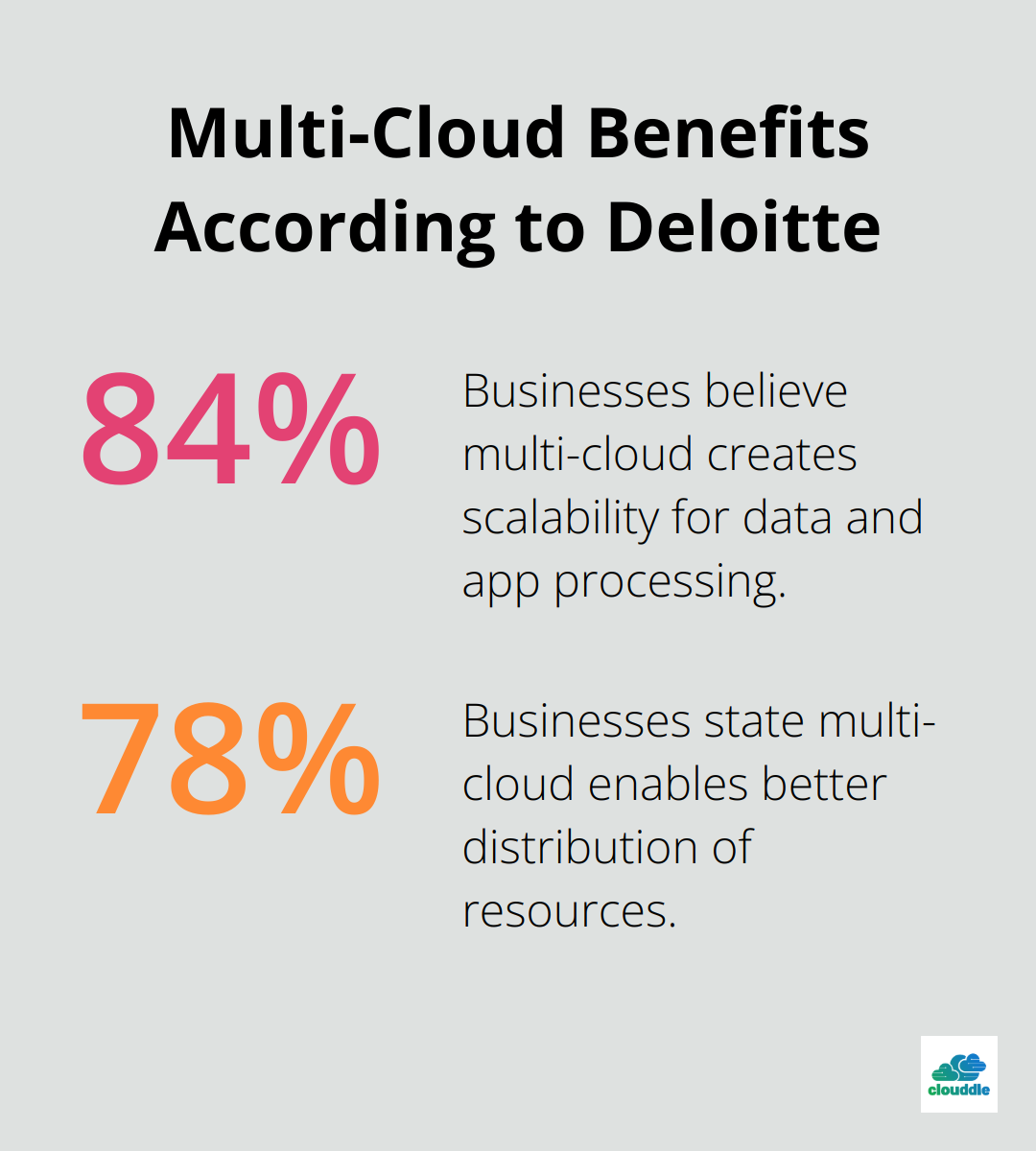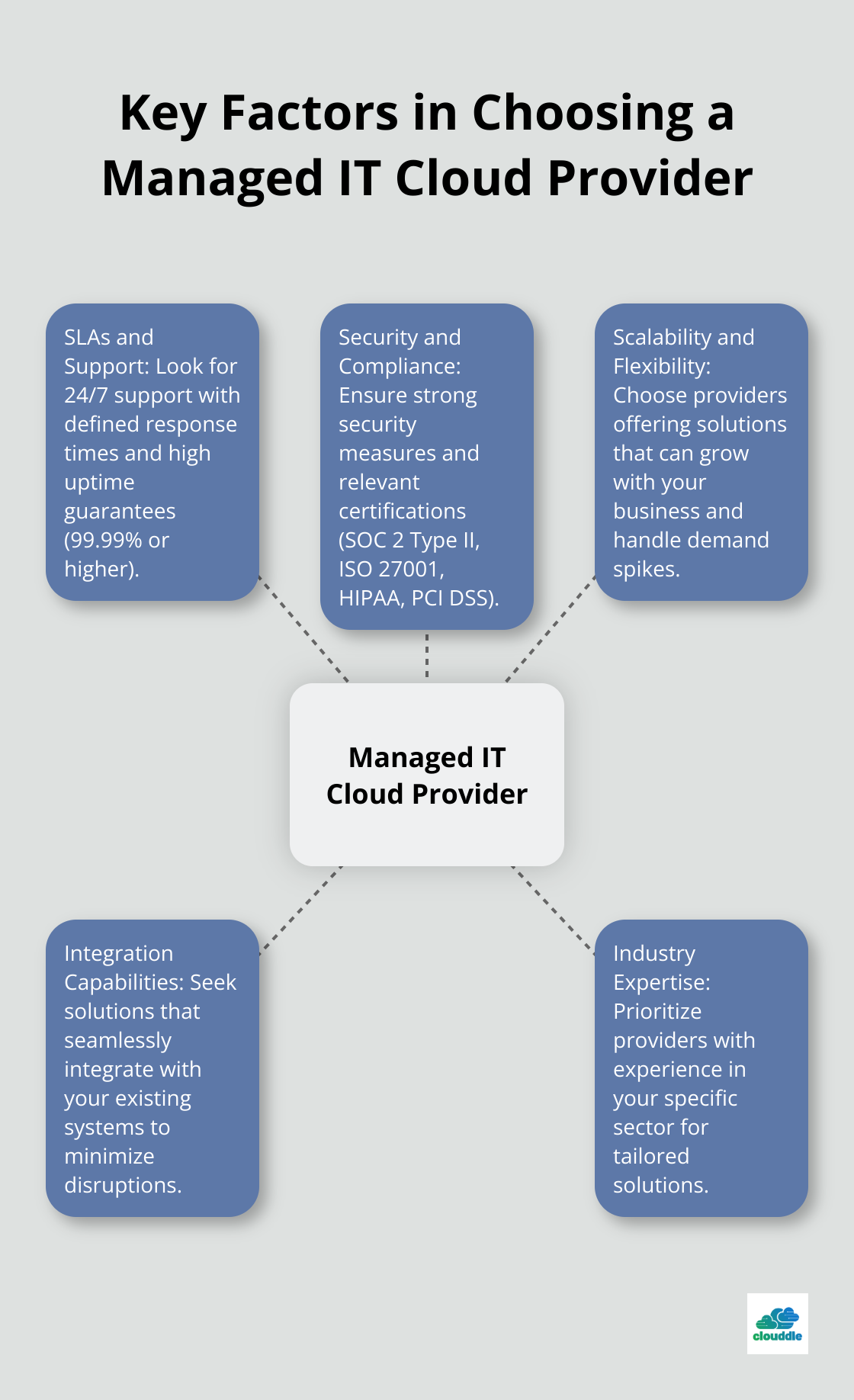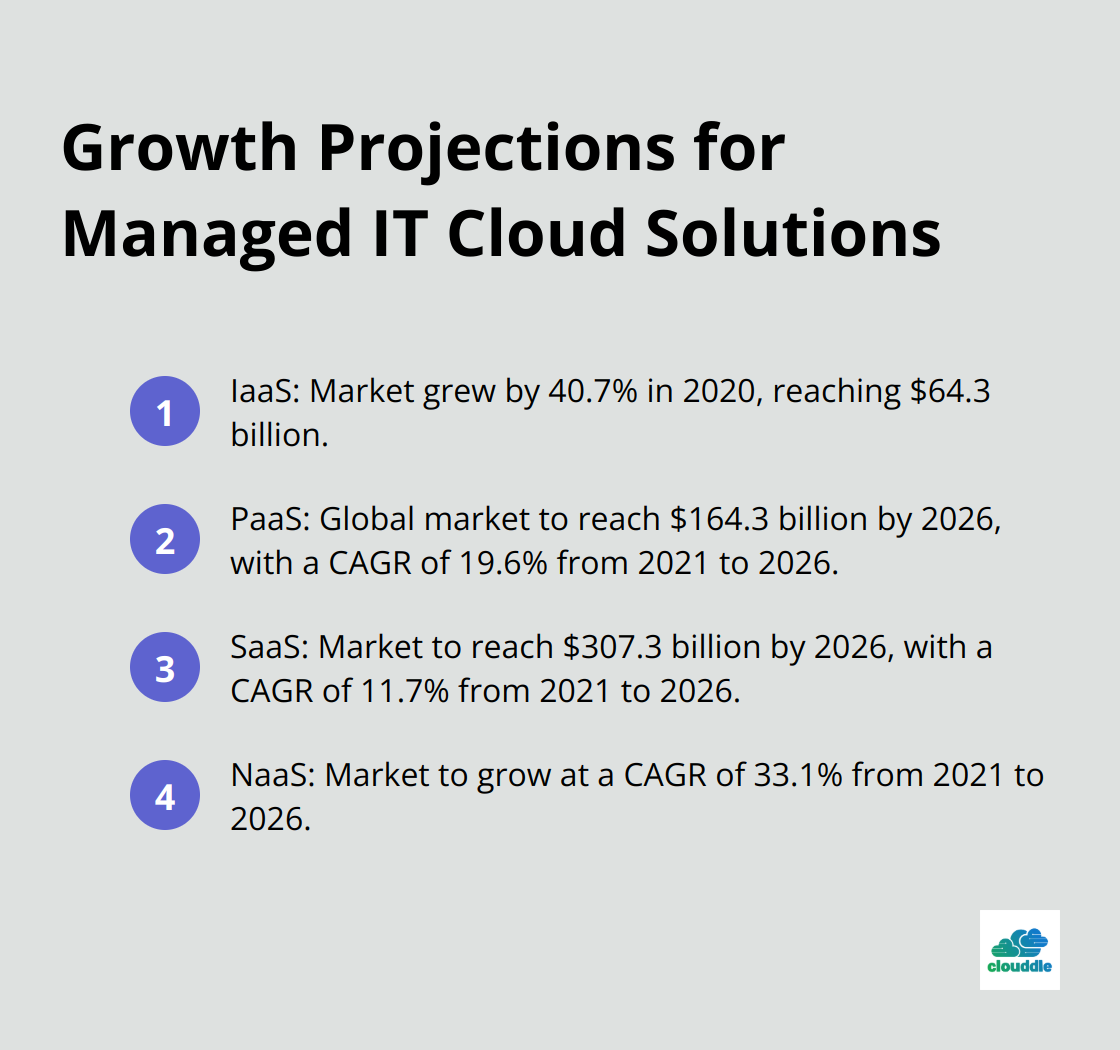Choosing the right managed IT cloud solutions can be a game-changer for your business. These services offer a powerful way to streamline operations, enhance security, and boost productivity.
At Clouddle, we’ve seen firsthand how the right provider can transform a company’s IT infrastructure. This guide will help you navigate the complex landscape of managed IT cloud solutions and make an informed decision for your organization.
What Are Managed IT Cloud Solutions?
Definition and Core Components
Managed IT cloud solutions provide comprehensive services that handle an organization’s IT infrastructure and operations through cloud-based technologies. These solutions combine hardware, software, and expert support, all managed by a third-party provider.
The core components of managed IT cloud solutions include managing cloud infrastructure, platform services, and SaaS applications, ensuring security, compliance, and cost optimization.
Benefits for Businesses of All Sizes
Managed IT cloud solutions offer significant advantages for companies across the spectrum:
- Small businesses can access enterprise-level technology without hefty upfront costs
- Medium-sized companies can scale their IT resources quickly as they grow
- Large enterprises can offload routine IT tasks, allowing internal teams to focus on strategic initiatives
Deloitte’s study shows that 84% of businesses believe multi-cloud creates scalability for data and app processing, and 78% state it enables better distribution of resources.

Debunking Common Misconceptions
Despite their benefits, managed IT cloud solutions often face misunderstandings:
- “Only suitable for large corporations”: In reality, these solutions are highly scalable and can fit the needs of any business (from startups to multinational conglomerates).
- “Loss of control over IT infrastructure”: Most providers offer robust reporting and management tools that give clients full visibility into their systems.
- “Always more expensive than in-house IT management”: While costs can vary, many businesses find that these solutions actually reduce their overall IT spending.
Choosing the Right Provider
When selecting a managed IT cloud solutions provider, consider factors such as:
- Service level agreements (SLAs) and support options
- Security measures and compliance certifications
- Scalability and flexibility of solutions
- Integration capabilities with existing systems
These factors will help you find a provider that aligns with your business needs and goals. In the next section, we’ll explore these key factors in more detail to guide you through the selection process.
What to Look for in a Managed IT Cloud Provider
Service Level Agreements and Support
A robust Service Level Agreement (SLA) forms the cornerstone of a strong provider-client relationship. Prioritize providers that offer 24/7 support with clearly defined response times. Managed services providers offer benefits such as improved security, efficiency, and reduced costs.
Uptime guarantees deserve close scrutiny. While many providers promise 99.9% uptime (which still allows for nearly 9 hours of downtime per year), try to find providers offering 99.99% or higher uptime guarantees. This approach will minimize potential disruptions to your business operations.
Security and Compliance
In today’s digital landscape, security takes center stage. Seek providers with strong security measures and relevant compliance certifications. A Ponemon Institute study found that 59% of companies have experienced a data breach caused by a third-party vendor. To mitigate this risk, ensure your provider has:
- SOC 2 Type II certification
- ISO 27001 certification
- HIPAA compliance (for healthcare industries)
- PCI DSS compliance (for handling credit card data)
Ask about their data encryption methods (both in transit and at rest) and their disaster recovery plans to further assess their security capabilities.
Scalability and Flexibility
Your business needs will evolve, and your IT solutions should keep pace. Look for providers that offer scalable solutions capable of growing with your business. Flexera’s 2023 State of the Cloud Report indicates that 87% of respondents reported having a multi-cloud strategy, underscoring the importance of flexibility in cloud solutions.

Question potential providers about their ability to handle sudden demand spikes and how quickly they can provision new resources. Inquire about their pricing models as well – do they offer pay-as-you-go options that allow you to scale up or down as needed?
Integration Capabilities
The right provider should offer solutions that seamlessly integrate with your existing systems. This integration minimizes disruptions and prevents the need for complete overhauls of your infrastructure. Ask about their experience with systems similar to yours and their approach to integration.
Industry Expertise
Different industries have unique IT requirements. A provider with experience in your specific sector will understand your challenges and offer tailored solutions. They should be able to provide case studies or references from similar businesses in your industry.
As we move forward, let’s explore the different types of managed IT cloud solutions available and how they can benefit your business.
Types of Managed IT Cloud Solutions

Infrastructure as a Service (IaaS)
IaaS provides virtualized computing resources over the internet. This includes servers, storage, and networking. The IaaS market grew by 40.7% in 2020, reaching $64.3 billion. Amazon Web Services (AWS) and Microsoft Azure lead this space.
IaaS allows companies to scale their infrastructure quickly without significant capital expenditure. An e-commerce company might use IaaS to handle increased traffic during holiday seasons without investing in permanent hardware.
Platform as a Service (PaaS)
PaaS offers a platform for developers to build, run, and manage applications without maintaining the underlying infrastructure. The global PaaS market will reach $164.3 billion by 2026, growing at a CAGR of 19.6% from 2021 to 2026 (MarketsandMarkets).
PaaS suits businesses that want to focus on application development rather than infrastructure management. A software development company might use PaaS to streamline their development process and reduce time-to-market for new applications.
Software as a Service (SaaS)
SaaS delivers software applications over the internet, eliminating the need for installation and maintenance on individual computers. The SaaS market will reach $307.3 billion by 2026, with a CAGR of 11.7% from 2021 to 2026 (MarketsandMarkets).
SaaS solutions benefit small to medium-sized businesses that want access to enterprise-grade software without associated costs and maintenance. A small marketing agency might use tools like HubSpot or Salesforce to manage their customer relationships and marketing campaigns.
Network as a Service (NaaS)
NaaS delivers network services virtually over the internet. This includes services like VPN, WAN, and network security. The NaaS market will grow at a CAGR of 33.1% from 2021 to 2026 (IDC).
NaaS offers businesses the flexibility to adapt their network infrastructure to changing needs without significant upfront investments. A multi-location retail business might use NaaS to ensure consistent and secure connectivity across all its stores.
Companies should consider their specific business needs, in-house IT capabilities, and growth plans when choosing between these solutions. Many businesses opt for a hybrid approach, combining different types of managed IT services to create a comprehensive and tailored IT strategy.
Final Thoughts
Selecting the right managed IT cloud solutions will significantly impact your business’s efficiency, security, and growth potential. You should prioritize providers that offer robust SLAs, comprehensive security measures, scalability, and seamless integration capabilities. These factors will ensure you partner with a provider that aligns with your business needs and goals.
Successful implementation of managed IT cloud solutions requires careful planning and communication. You must clearly define your objectives and expectations, and involve key stakeholders from various departments to address all needs. Develop a detailed migration plan and timeline, and work closely with your chosen provider to execute it smoothly.
At Clouddle, we specialize in delivering cutting-edge managed IT cloud solutions tailored to specific industries. Our Network as a Service (NaaS) offering combines networking, entertainment, and security into a seamless package. We enable businesses to focus on growth and efficiency without worrying about IT infrastructure (with 24/7 support and flexible contracts).


